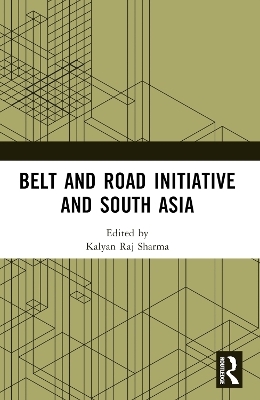
Belt and Road Initiative and South Asia
Routledge (Verlag)
978-1-032-50830-6 (ISBN)
- Lieferbar (Termin unbekannt)
- Versandkostenfrei
- Auch auf Rechnung
- Artikel merken
Belt and Road Initiative (BRI) has been an obscure concept, and it remains difficult to distinguish what BRI is and isn’t, making it difficult for many governments and global corporations to properly participate in it. I am delighted to present the opinions and perspectives of many eminent researchers, professors and experts from various countries on the Belt and Road Initiative (BRI).
The book contains 11 chapters which are written by distinguished researchers and practitioners from various parts of Asia. While these 11 chapters discuss the many characteristics of the BRI, including advantages and costs, they also convey the lessons that many other Southeast Asian countries have learned. Each chapter offers valueable lessons to the countries that have yet to participate in the initiatives.
Kalyan Raj Sharma graduated from Fudan University with a doctoral degree in economics in 2011. He is now the Chair of Nepal China Friendship Forum(NCFF), visiting scholar at Kathmandu University and the Managing Director of Adventure Outdoor Group of Companies. During his doctoral studies at Fudan, Sharma published a number of academic papers in both Chinese and English on the economy and tourism of China and Nepal.
Foreword
Preface
Acknowledgements
About the Contributors
List of Tables, Figures and Maps
List of Abbreviations
1. Introduction
Kalyan Raj Sharma
Part I: Big Picture
2. China’s Trade Imbalance with South Asian Nations: How Can the BRI Help?
Yin Xiangshuo
3. The BRI and SDGs Nexus: Cooperation or Confrontation?
Bhoj Raj Poudel
Part II: South Asia
4. BRI for Trade and Connectivity in South Asia: A CPEC Model
Hina Aslam
5. BRI, Trade and Connectivity: Bangladesh’s Perspective
Mahfuz Kabir and Nahian Reza Sabriet
6. Strengthening International Cooperation and Building a Community of Shared Future between Nepal and China
Yang Yabo and Zhang Jianghong
7. On Countermeasures and Suggestions to Further Economic Cooperation between China and Nepal
Di Fangyao, Cui Hongye and Yang Fan
8. Evidence and Lessons from BRI: The Case of China-Pakistan Economic Corridor
Vaqar Ahmed
9. The COVID-19 Pandemic and BRI 2.0
Partha S Banerjee
Part III: Lessons from Southeast Asia
10. Chinese Belt and Road Initiative (BRI) and the Sustainable Development in Lao PDR
Vanxay Sayavong
11. Malaysia’s Response towards China’s Belt and Road Initiative under Mahathir 2.0
Nur Shahadah Jamil
12. Win-Win Cooperation through the BRI: What Constitutes a “Win” for the Philippines?
Darlene V. Estrada
Annexures
• Conference Agenda I (2018)
• Conference Agenda II (2019)
Index
| Erscheinungsdatum | 15.10.2024 |
|---|---|
| Zusatzinfo | 41 Line drawings, black and white; 7 Halftones, black and white; 48 Illustrations, black and white |
| Verlagsort | London |
| Sprache | englisch |
| Maße | 152 x 229 mm |
| Gewicht | 520 g |
| Themenwelt | Sozialwissenschaften ► Politik / Verwaltung ► Europäische / Internationale Politik |
| Wirtschaft ► Volkswirtschaftslehre ► Makroökonomie | |
| Wirtschaft ► Volkswirtschaftslehre ► Wirtschaftspolitik | |
| ISBN-10 | 1-032-50830-2 / 1032508302 |
| ISBN-13 | 978-1-032-50830-6 / 9781032508306 |
| Zustand | Neuware |
| Haben Sie eine Frage zum Produkt? |
aus dem Bereich


